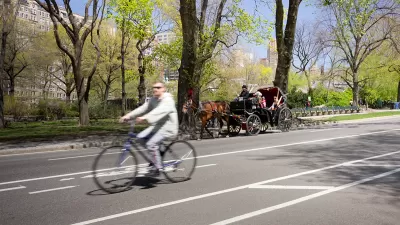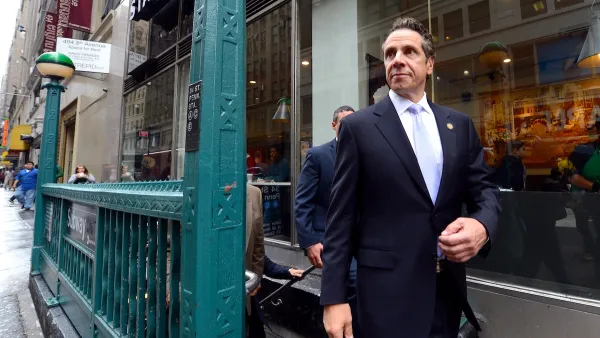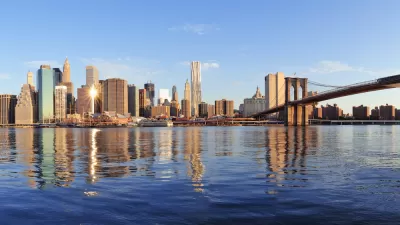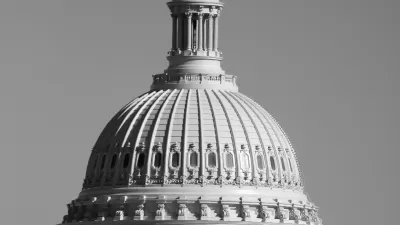To the potential surprise of many planners in the United States, strategic planning and politics can work together to produce significant policy outcomes in democratically governed cities.

There's a commonly held assumption that long-term planning and democratic politics are incompatible. The intended outcomes of long-term planning require continuity, learning, and adaptation, but frequent election cycles and turnover of political incumbents (not to mention public opposition) can disrupt established policy pathways and incentivize public officials to focus on highly visible, short-term gains. The embeddedness of political leaders in social and administrative structures can further constrain their authority and actions.
The Transforming Urban Transport: the Role of Political Leadership (TUT-POL) project, based at the Harvard Graduate School of Design and funded by the Volvo Research and Education Foundations (VREF), focuses on the role of political leadership in the successful implementation of path-breaking transportation policies in democratically governed cities. Building on research on case studies from around the world, the TUT-POL team has identified tools, strategies, and tactics for advancing innovative and sustainable urban transportation. As it turns out, strategic planning and politics often go hand in hand in producing significant policy outcomes in democratically governed cities.
Take, for example, New York City's remaking of streets and sidewalks as "livable streets": mixed-use public spaces, conducive to use by pedestrians, cyclists, motor vehicles, and mass transit. An important starting point in New York City's livable streets effort was the development of PlaNYC (2007), the city’s first comprehensive long-range plan as a multi-agency process, which included input from key civic leaders. The Department of Transportation followed with its first-ever strategic plan, developed as the transportation variant of PlaNYC. To translate PlaNYC’s transportation-related agenda into action, Mayor Bloomberg tapped DOT Commissioner Janet Sadik-Khan, who forged co-productive relations between the DOT and advocacy organizations, made use of interim projects and adaptive policies to temper opposition and demonstrate feasibility, and partnered with private firms and neighborhood-based organizations to expand program capacity. In turn, the mayor focused on higher-level actions, such as creating an Office of Long-term Planning and Sustainability and providing Sadik-Khan and the DOT with political backing in the face of public controversy and criticism.
That the livable street projects were planned and implemented with ongoing engagement from non-governmental entities improved their political defensibility—as did benefits to quality of life and economic development. As the end of Bloomberg’s final term created uncertainty about livable streets, Transportation Alternatives, a non-profit at the forefront of policy changes, reframed the initiatives as part of a broader, safety-oriented agenda, which the incoming de Blasio Administration subsequently embraced.
Likewise, a combination of strategic planning and political leadership played a pivotal role in the successful passage of Measure R, a November 2008 Los Angeles County ballot measure that imposed a half-cent sales tax increase for transportation projects after gaining approval from more than two-thirds of the voters. Following stalled rail projects and waning public confidence in the agency in the late 1990s, by 2008 the Los Angeles County Metropolitan Transportation Authority (Metro) had new leadership that focused on improving day-to-day operations and updating the agency's Long Range Strategic Plan (LRTP). The LRTP included lists of strategic projects and draft spending plans, which provided the technical and financial analyses needed to develop Measure R. In turn, Move LA, a transportation-oriented coalition of labor unions, environmental groups, and business organizations rallied support from political officials, helped design the ballot initiative, and peopled the campaign for Measure R. Elected officials at the time, most notably County Supervisor Zev Yaroslavsky, Los Angeles Mayor Antonio Villaraigosa (both members of Metro's geographically diverse 13-member board), California Assemblyman Mike Feuer, and former Assemblyman Richard Katz, drew on their political experience, polling data, and networks of supporters to craft the policy package as well as design and finance the campaign for its passage.
In 2012, Metro placed another proposition before voters, asking them to extend Measure R's 30-year sunset provision so as to make possible a larger amount of borrowing and accelerate the pace of transport improvements. Failing by less than a percentage point, Metro's leadership, with backing from Move LA and the new Los Angeles mayor, Eric Garcetti, put forth a 2016 ballot initiative asking voters to approve another half-cent sales tax to augment Measure R revenues in addition to extending the latter indefinitely; Measure M passed with about 70 percent of the vote, at an even higher margin than Measure R.
In both cases, strategic planning played a transformative role in addressing critical transportation issues and clarifying long-term urban aspirations and policy goals. Together with in-depth, context-appropriate research on strategic and urgent questions, delineating coherent actions and means for implementation furthered the operationalization of change policies. In turn, elected officials provided political support to planners by institutionalizing transportation innovations—forming a new department in New York and proposing legislation in Los Angeles—and managing public relations, in part, through skillful use of polling data and media attention. Both NYDOT and Metro further engaged advocacy groups and multi-sector partners to augment operational capacities, generate broad-based support, and effectively cultivate an independent, rebounding force to carry policy momentum.
Such approaches of political leadership and collaborative, networked planning and implementation inform an understanding of the particular challenges of long-term planning in democratic contexts. Where electoral cycles and political competition impose time limits on even high-profile, multi-term mayors like Bloomberg and Villaraigosa, institutionalization of new governing entities, procedures, and rules can amplify effects of change policies long after political terms expire. The same can be said for enlisting non-governmental partners in policy co-production and cultivating public buy-in and broad-based support. Moreover, by enhancing the political legitimacy of public authorities and key decision makers, modes of democratic decision-making and governance can enhance their scope for action.
Finally, why do political leaders support long-term planning, particularly in the domain of urban transport? PlaNYC was part of the Bloomberg Administration’s ambitions to remake New York City as an economically competitive and livable city for the 21st century. In Los Angeles, Villaraigosa strongly advocated for a more robust transit agenda as part of his vision to make the city into a more livable, socio-spatially integrated, environmentally sustainable, economic, and cultural leader.
The nature of political leadership in democratically governed cities (beyond the individual personalities, motives, and authority of leaders) derives from political supporters and constituencies, along with popular conceptions of the good city and the good life. Civic coalitions, urban struggles, and social movements have always shaped the expectations and visions for urban living and development. Thus, transformative policies and planning require working beyond the traditional barriers between long-term planning and democratic politics—both inside out and outside of formal planning structures and processes.
Lily Song is a Lecturer in Urban Planning and Design and Senior Research Associate with the TUT-POL project at the Harvard University Graduate School of Design. Her teaching and research focus on issues of urban sustainability, livability, and justice; race and class politics in American cities and postcolonial urban contexts; and community development. She holds a PhD in Urban and Regional Planning from MIT.
Diane Davis is Project Director for TUT-POL and a Charles Dyer Norton Professor of Regional Planning and Urbanism and Chair of the Department of Urban Planning and Design at the Harvard University Graduate School of Design. She is an elected member of the Urban and Regional Development Section (RC21) of the International Sociological Association (ISA) and a member of Panel SH3 (Environment and society: environmental studies, demography, social geography, urban and regional studies) of European Research Council. She has published widely on cities, governance, and urban politics.

Planetizen Federal Action Tracker
A weekly monitor of how Trump’s orders and actions are impacting planners and planning in America.

Maui's Vacation Rental Debate Turns Ugly
Verbal attacks, misinformation campaigns and fistfights plague a high-stakes debate to convert thousands of vacation rentals into long-term housing.

Cuomo Is the Candidate of Both NIMBYs and Developers. What Gives?
In the New York City mayoral race, odd bedfellows align to preserve the housing status quo.

Amtrak Rolls Out New Orleans to Alabama “Mardi Gras” Train
The new service will operate morning and evening departures between Mobile and New Orleans.

The Subversive Car-Free Guide to Trump's Great American Road Trip
Car-free ways to access Chicagoland’s best tourist attractions.

San Antonio and Austin are Fusing Into one Massive Megaregion
The region spanning the two central Texas cities is growing fast, posing challenges for local infrastructure and water supplies.
Urban Design for Planners 1: Software Tools
This six-course series explores essential urban design concepts using open source software and equips planners with the tools they need to participate fully in the urban design process.
Planning for Universal Design
Learn the tools for implementing Universal Design in planning regulations.
Heyer Gruel & Associates PA
JM Goldson LLC
Custer County Colorado
City of Camden Redevelopment Agency
City of Astoria
Transportation Research & Education Center (TREC) at Portland State University
Jefferson Parish Government
Camden Redevelopment Agency
City of Claremont




























